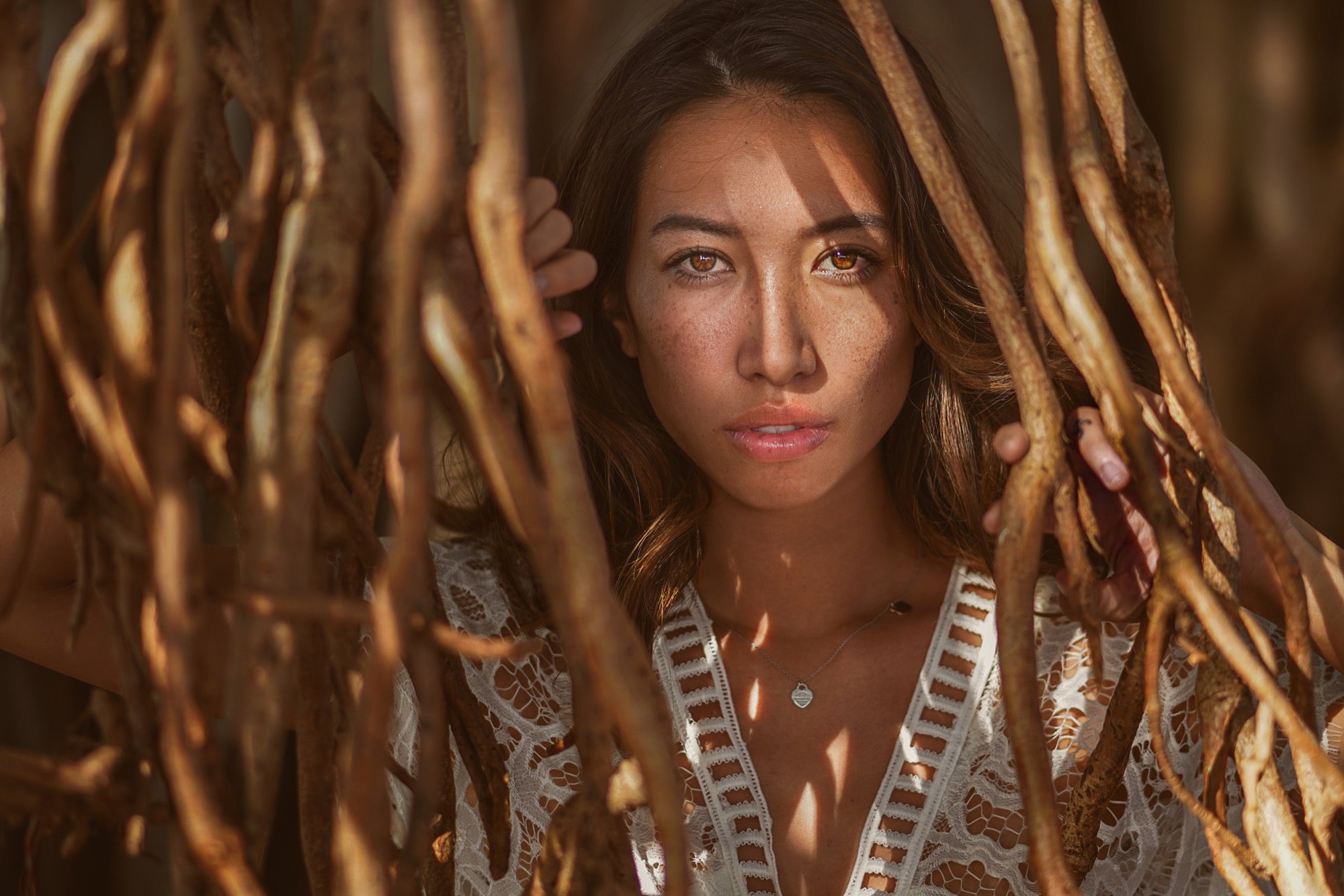I like to show my environment on location and shoot through things, then I like to use shadows that give some mystery to the portrait. Shadows really add a lot more drama, so when I found this great banyan tree in Hawaii that had these beautiful vines hanging down them, I decided to use them to create depth. I set the lens to f/1.8 to create a very shallow plane of focus and more depth in the background because I blurred it out a bit. I placed the model within these roots to create some shadows across her face, but not totally cover it. I got the light right on her eye and used Eye AF to nail the shot. Here’s how I set the AF in my cameras to do it.
That’s a key difference in the way Sony’s Eye AF works compared to other camera systems I’ve used. The others could focus on the eye, but they couldn’t track it.

Sony α7R III. Sony FE 85mm f/1.8 lens. 1/640-sec., f/1.8, ISO 100. Using Eye AF with a fast lens like this 85mm f/1.8 is absolutely killer! It's all in how you set the AF.
Eye AF That Tracks The Subject Is Absolutely Killer
The first thing I do is I set Focus Mode to Continuous AF so the camera will keep the subject in focus constantly. If I'm doing a portrait from the waist up and the person's eyes are facing toward the camera, I will go ahead and hit Eye AF immediately and it will track that eye. (You can map Eye AF to whichever button you prefer. A lot of photographers like to have it on the “Focus Hold” button which is on the lens.) Because I take so many portraits, Eye AF, which doesn’t just focus on the eye, but tracks that eye as the subject moves, is just killer. That’s a key difference in the way Sony’s Eye AF works compared to other camera systems I’ve used. The others could focus on the eye, but they couldn’t track it and I was getting a lot of missed focus. When I use Eye AF with my Sony cameras, all of my shots are razor sharp.
Using Center Lock-on AF Or Expand Flexible Spot Together With Eye AF
However, let's say I'm shooting a subject and maybe there's a side angle and they're wearing sunglasses, so there’s no eye in the frame to lock onto. In that situation I use Center Lock-on AF. Center Lock-on AF will find the focus in the middle of my frame when I press the Center Button and when I recompose, focus stays locked onto my subject. You can also try using Lock On AF: Expand Flexible Spot to do roughly the same thing without having to reset Center Lock-on AF as you shoot. Then, with the AF system tracking the subject as I recompose, before I shoot, I can activate Eye AF if the eye is visible in the frame to get it perfectly sharp.
How you set the AF on the camera makes all the difference. Once you see how it works, and how you can use multiple AF modes in concert with one another, it’s truly amazing how few focus misses you’ll have.


